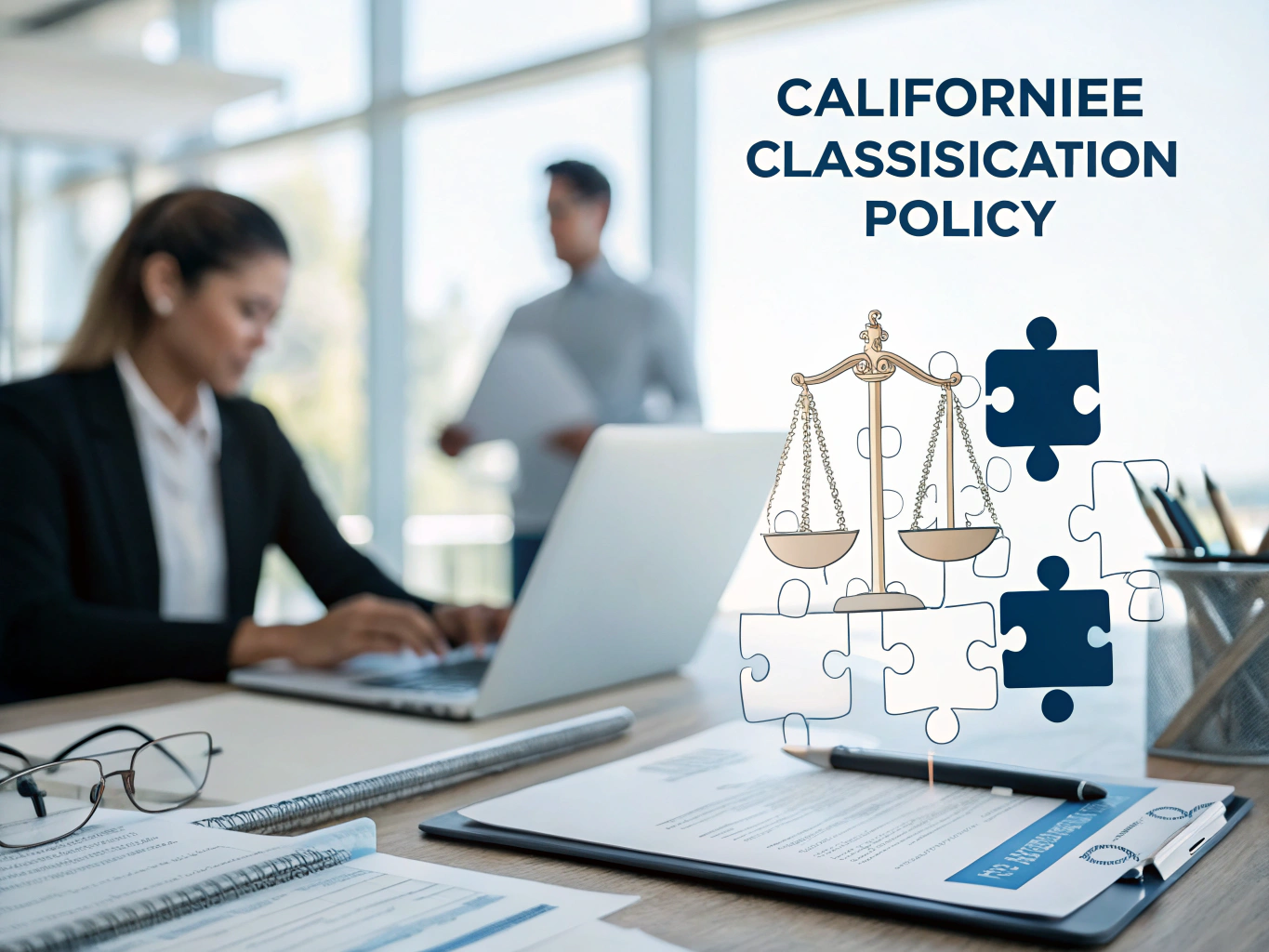Definition
The California Employee Classification Policy is a set of guidelines designed to help businesses accurately classify their employees according to state labor laws. This classification is crucial for ensuring compliance, fair labor practices, and proper employee treatment. By following a well-defined policy, HR professionals can navigate the complexities of employee classification in California effectively.
Key Components
Understanding the essential elements of the California Employee Classification Policy is key to preventing misclassification and the legal headaches that come with it. Here’s a look at the main components you should consider:
- Exempt vs. Non-Exempt Classification: Employees are categorized as exempt or non-exempt based on their job duties and salary. Exempt employees don’t receive overtime pay, while non-exempt employees do for hours worked beyond 40 in a week. For instance, a marketing manager may be classified as exempt, whereas an administrative assistant would likely be non-exempt.
- Independent Contractor Criteria: To classify someone as an independent contractor, they must meet specific legal criteria that differentiate them from employees. This includes control over their work and independence in how services are provided. Always review contractor agreements carefully to avoid misclassification pitfalls.
- Clear Job Descriptions: Each role within your organization should have a detailed job description that outlines responsibilities and expectations. This helps to ensure that classification aligns with actual duties. Regularly reviewing these descriptions ensures they remain accurate and relevant.
- Recordkeeping: Maintaining accurate records of employee classifications, including their job titles and exempt/non-exempt status, is essential. This documentation helps prove compliance with labor laws, especially if your business faces an audit or legal scrutiny.
- Ongoing Training: Educating managers and supervisors about employee classification is vital. Regular training sessions can help ensure that everyone understands the nuances of classification and stays updated on legal changes.
Importance in the Workplace
Why does the California Employee Classification Policy matter? Think of it this way: Correct classification not only protects your business from legal penalties but also fosters a fair work environment. For example, if you misclassify a non-exempt employee as exempt, you could be denying them rightful overtime pay, which can lead to employee dissatisfaction and high turnover. On the flip side, proper classification promotes transparency and trust, ensuring that employees feel valued and understood.
Best Practices
Implementing an effective California Employee Classification Policy doesn’t have to be daunting. Here are some practical tips to help you get started:
- Utilize Classification Templates: Create or adapt templates for employee classification to standardize your process. This can simplify decision-making and ensure consistency across the organization.
- Conduct Regular Audits: Schedule annual audits of employee classifications to identify any discrepancies or areas for improvement. This proactive approach can help you catch potential misclassifications before they become issues.
- Stay Informed: Labor laws can change, so it’s crucial to keep yourself updated on any amendments or new regulations. Consider subscribing to HR newsletters or joining local HR associations to stay in the loop.
- Encourage Open Communication: Foster an environment where employees feel comfortable discussing their classifications. If someone believes they’ve been misclassified, addressing these concerns promptly can prevent escalations.
- Document Everything: Keep a thorough record of all classification decisions and the rationale behind them. This not only supports compliance but also provides clarity and accountability within your organization.
Legal Considerations
When it comes to legal aspects, California has some of the strictest labor laws in the nation. Misclassifying employees can result in hefty fines, back pay claims, and even lawsuits. Familiarize yourself with both state and federal guidelines regarding employee classification to ensure compliance. Consulting with an employment attorney can also provide valuable insights and help you navigate potential legal pitfalls.
Conclusion
Understanding and implementing the California Employee Classification Policy is not just about ticking boxes; it’s about fostering a fair and compliant workplace. By establishing clear guidelines and practices, you ensure that your employees are treated justly while protecting your organization from potential legal troubles. Embrace the importance of this policy, and you’ll contribute to a positive, transparent workplace culture that values every employee’s contributions.




